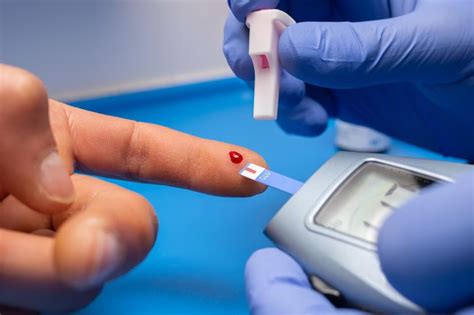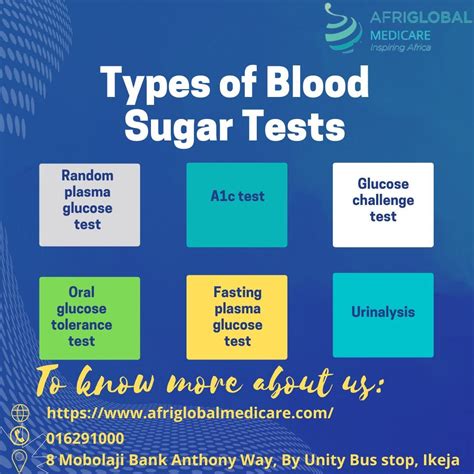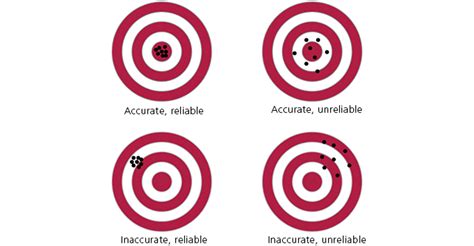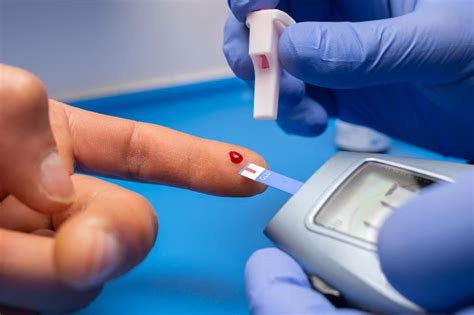Intro
Discover 5 ways to test blood sugar, including glucose meters, continuous monitoring, and alternative methods, to effectively manage diabetes and monitor glucose levels, ensuring accurate blood sugar control and prevention of complications.
Monitoring blood sugar levels is a crucial aspect of managing diabetes and maintaining overall health. There are several methods to test blood sugar, each with its own set of advantages and disadvantages. Understanding these methods can help individuals make informed decisions about their health and choose the most suitable option for their needs.
The importance of testing blood sugar levels cannot be overstated. It provides valuable insights into how the body is responding to different factors such as diet, exercise, and medication. By regularly monitoring blood sugar levels, individuals can identify patterns, make adjustments to their lifestyle, and prevent complications associated with diabetes. Moreover, it empowers individuals to take control of their health, making them more proactive in their diabetes management plan.
In recent years, there has been a significant advancement in blood glucose monitoring technologies, offering individuals a range of options to choose from. From traditional glucometers to continuous glucose monitoring systems, each method has its unique features and benefits. Whether you are newly diagnosed with diabetes or have been managing the condition for years, understanding the different ways to test blood sugar is essential for effective diabetes care.
Introduction to Blood Sugar Testing

Blood sugar testing is a simple process that involves pricking the skin to collect a small blood sample, which is then analyzed to determine the glucose level. This information is vital for managing diabetes, as it helps individuals understand how their body responds to various factors such as food, physical activity, and medication. By monitoring blood sugar levels, individuals can make informed decisions about their diet, exercise routine, and medication, ultimately reducing the risk of diabetes-related complications.
Types of Blood Sugar Tests

There are several types of blood sugar tests, each designed to provide unique insights into an individual's glucose levels. These include:
- Fasting blood sugar test: This test measures blood glucose levels after an overnight fast.
- Postprandial blood sugar test: This test measures blood glucose levels after a meal.
- Random blood sugar test: This test measures blood glucose levels at any time of the day.
- Oral glucose tolerance test: This test measures the body's ability to regulate blood sugar levels after consuming a sugary drink.
- Hemoglobin A1c test: This test measures average blood glucose levels over the past 2-3 months.
Benefits of Regular Blood Sugar Testing
Regular blood sugar testing offers numerous benefits, including:
- Improved glucose control: By regularly monitoring blood sugar levels, individuals can identify patterns and make adjustments to their diet, exercise routine, and medication.
- Reduced risk of complications: Regular blood sugar testing can help individuals prevent diabetes-related complications such as heart disease, kidney damage, and nerve damage.
- Enhanced quality of life: By managing blood sugar levels effectively, individuals can reduce the risk of diabetes-related symptoms such as fatigue, blurred vision, and increased thirst and urination.
Methods of Blood Sugar Testing

There are several methods of blood sugar testing, each with its own set of advantages and disadvantages. These include:
- Fingerstick testing: This is the most common method of blood sugar testing, involving pricking the fingertip with a lancet to collect a small blood sample.
- Continuous glucose monitoring: This method involves wearing a small device that continuously monitors blood glucose levels throughout the day.
- Flash glucose monitoring: This method involves wearing a small device that provides intermittent readings of blood glucose levels.
- Urine testing: This method involves testing urine for ketones, which can indicate high blood glucose levels.
- Interstitial fluid testing: This method involves testing the fluid between cells for glucose levels, providing a more accurate picture of blood glucose levels.
Choosing the Right Method
Choosing the right method of blood sugar testing depends on several factors, including lifestyle, preferences, and individual needs. For example, individuals who lead active lifestyles may prefer continuous glucose monitoring, while those who prefer a more traditional approach may opt for fingerstick testing. Ultimately, the choice of method depends on what works best for the individual and their healthcare provider.
Importance of Accuracy and Reliability

Accuracy and reliability are crucial when it comes to blood sugar testing. Inaccurate or unreliable results can lead to mismanagement of diabetes, increasing the risk of complications. Therefore, it is essential to choose a method that provides accurate and reliable results, and to follow proper testing procedures to ensure accuracy.
Tips for Accurate Blood Sugar Testing
Here are some tips for accurate blood sugar testing:
- Choose a reputable brand: Look for brands that have a reputation for producing high-quality, accurate testing equipment.
- Follow proper testing procedures: Make sure to follow the manufacturer's instructions for testing, and to use the equipment correctly.
- Calibrate the device: Regularly calibrate the device to ensure accuracy and reliability.
- Use the correct test strips: Use test strips that are compatible with the device, and that have not expired.
Common Mistakes to Avoid

There are several common mistakes to avoid when it comes to blood sugar testing, including:
- Not following proper testing procedures
- Using expired test strips
- Not calibrating the device
- Not choosing a reputable brand
- Not testing regularly enough
Consequences of Inaccurate Blood Sugar Testing
Inaccurate blood sugar testing can have serious consequences, including:
- Mismanagement of diabetes: Inaccurate results can lead to mismanagement of diabetes, increasing the risk of complications.
- Delayed diagnosis: Inaccurate results can delay diagnosis, leading to untreated diabetes and increased risk of complications.
- Increased risk of complications: Inaccurate results can increase the risk of diabetes-related complications such as heart disease, kidney damage, and nerve damage.
Future of Blood Sugar Testing

The future of blood sugar testing is exciting, with new technologies and innovations emerging all the time. From non-invasive testing methods to advanced continuous glucose monitoring systems, the future of blood sugar testing promises to be more accurate, reliable, and convenient than ever before.
Emerging Trends
Here are some emerging trends in blood sugar testing:
- Non-invasive testing: Non-invasive testing methods, such as optical testing, are becoming increasingly popular.
- Artificial intelligence: Artificial intelligence is being used to develop more advanced continuous glucose monitoring systems.
- Mobile health: Mobile health technologies, such as mobile apps, are being used to track and manage blood sugar levels.
What is the best method of blood sugar testing?
+The best method of blood sugar testing depends on individual needs and preferences. Consult with a healthcare provider to determine the most suitable method.
How often should I test my blood sugar levels?
+The frequency of blood sugar testing depends on individual needs and circumstances. Consult with a healthcare provider to determine the most suitable testing schedule.
What are the risks of inaccurate blood sugar testing?
+Inaccurate blood sugar testing can lead to mismanagement of diabetes, delayed diagnosis, and increased risk of complications. It is essential to choose a reliable testing method and follow proper testing procedures.
In conclusion, monitoring blood sugar levels is a critical aspect of diabetes management. With the various methods available, individuals can choose the most suitable option for their needs and preferences. By understanding the benefits, working mechanisms, and potential drawbacks of each method, individuals can make informed decisions about their health and take proactive steps towards effective diabetes care. We invite you to share your experiences, ask questions, or provide feedback on this article, and look forward to continuing the conversation on the importance of blood sugar testing.
